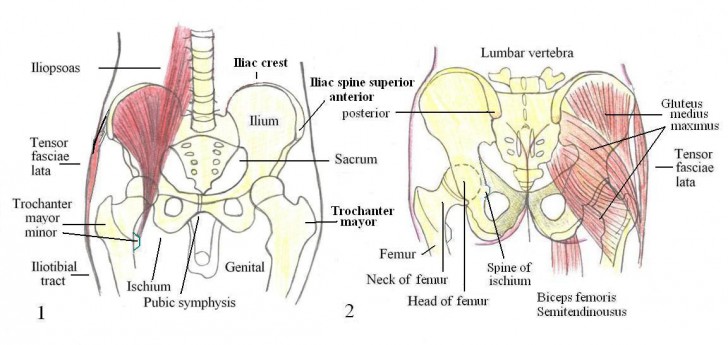Sciatica and back pain and very common complaints that can impact all aspects of quality of life. Around 60-80% of the population will report some form of sciatica or back pain during their lifetime. Back pain is second only to the common cold as a reason for absence from work. Poorly managed back pain however can cause damaging effects and can turn a simple problem into a long term disability.
What is sciatica?
Let’s firstly look at sciatica. Sciatica is a complaint which is linked to back pain but includes an additional pain which travels into the buttocks or the legs. Its definition is pain that occurs from pressure or irritation placed on the sciatic nerve. This nerve is the longest in the human body and runs from under the pelvis, all the way through the legs and down to the feet.
The pain caused by this pressure on the nerve can radiate anywhere from the lower back down to the calves. Pain can be anywhere from mild to severe. The most common cause of sciatica is a slipped disc; less common is the narrowing of the spinal nerve column which also creates pressure on the nerve itself.
How to treat sciatica
Treatments for sciatica include hot and cold compresses, over the counter painkillers and a combination of physiotherapy exercise and resting the legs. In rare cases only surgery will fix the problem. To minimize the risk of sciatica you can help yourself by maintaining good posture, using good lifting techniques, regular exercises based on flexibility and ensuring god stretching before and after any exercise.
What about back pain?
Back pain is a broad term which most people use at some point in their lives. The pain can be described as an ache, twist, stabbing pain and tension and again can range from a slight twinge to debilitating problems which prevent sufferers from caring for themselves on a daily basis. Obvious causes are similar to sciatica and can also be treated in a similar way.
Other causes for back pain could extend from the very rare such as cancer or growths on the spinal column to less rare such as kidney or urinary infection to more common problems such as poor sleep positions and unbalanced posture or carrying of items. Even a small handbag wrongly position can cause noticeable back pain.
Back pain is usually felt around the lower back area but can be felt anywhere from the neck down to the hips. Back pain can be described as whiplash, shoulder pain, frozen shoulder, slipped disc and as we already saw- sciatica. There is also a type of arthritis affecting the back which will have different causes and treatments.
How to treat back pain
Back pain can usually be treated by the individual with simple pain killers and by keeping mobile. It is recommended for people to carry on with their daily activities as much as possible and moderate exercise such as walking is beneficial. State of mind plays a big part in the recovery of back pains with a positive outlook aiding the healing process.
It is unusual for back pain to last longer than 6 weeks, and it is most common in individuals between 30-50 years of age. Any first back pain outside of these age brackets could be an indication of something more serious.
